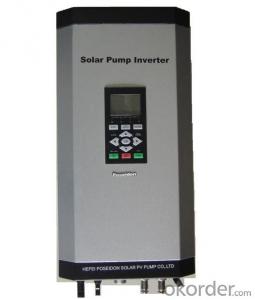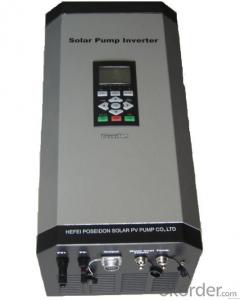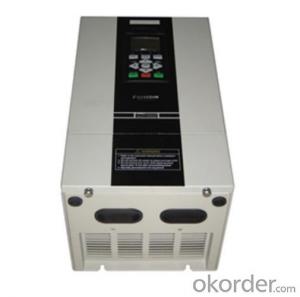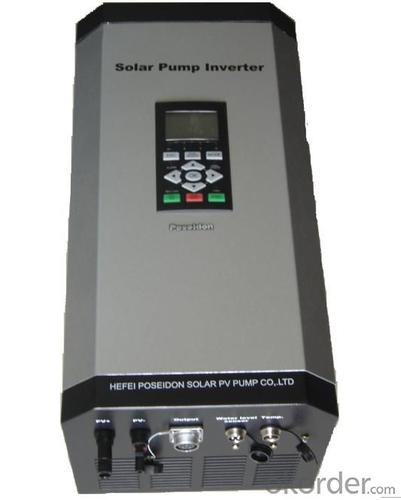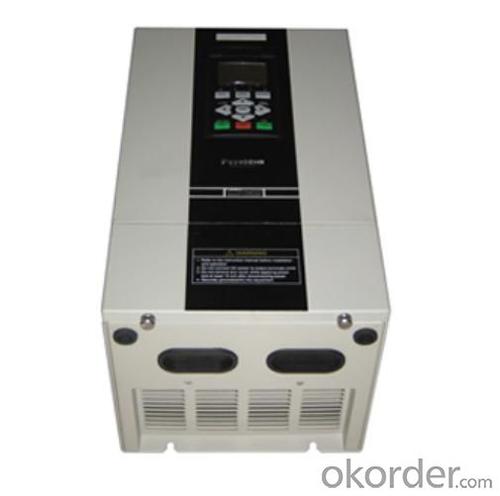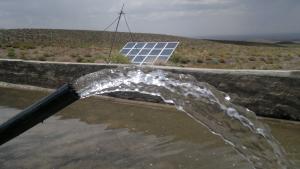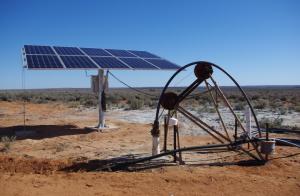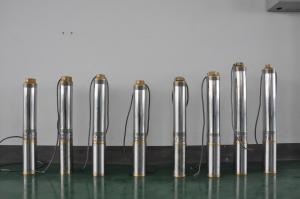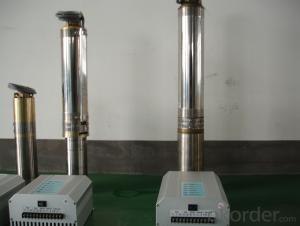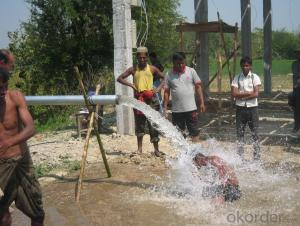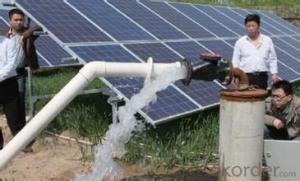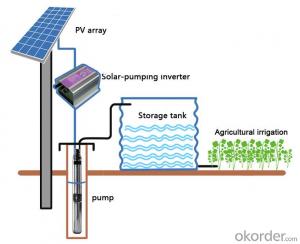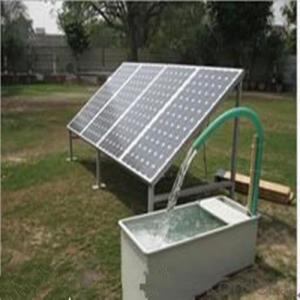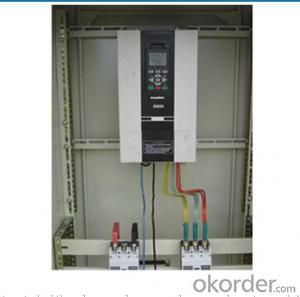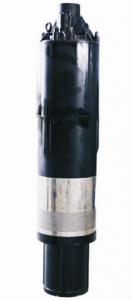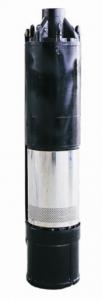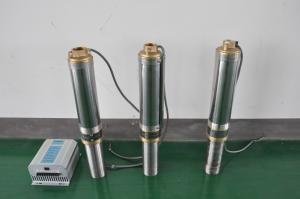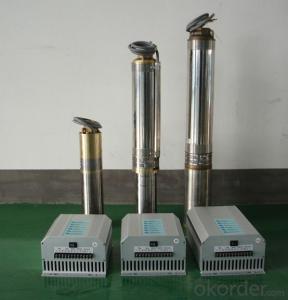Seaflo Solar Pump FCPM2200L Inverter
- Loading Port:
- China Main Port
- Payment Terms:
- TT OR LC
- Min Order Qty:
- -
- Supply Capability:
- -
OKorder Service Pledge
Quality Product, Order Online Tracking, Timely Delivery
OKorder Financial Service
Credit Rating, Credit Services, Credit Purchasing
You Might Also Like
Solar pump inverter FCPM2200L Product Description:
Solar water pumping system is constructed with solar panel array,solar pump inverter and AC water pump, DC current produced from solar panel will be delivered to solar pump inverter,and it will convert it into AC current to drive water pump,and will automatically regulate output frequency according to sun radiance intensity,maximally realize MPPT tracking function.
Features
Adopting the proposed dynamic VI maximum power point tracking (MPPT) control method, with fast response, and reliable operation, achieves efficiency of 99%.
Designed with variable frequency driver, greatly improves efficiency
Extremely high efficiency
Digital mode control, with automatic operation and manual operation mode options
Complete protection functions
Adopts intelligent IPM module, with high reliability
LCD display and operation panel, in real time presents operating data
Optional for water level measurement and control circuit
Applicable for general ACC pumps, like centrifugal pump, piston pump etc.
Independent intellectual property; Highly effective, the redundant reliability, exempts the maintenance and the long life.
The pumps are soft started, fully protected.
No batteries are used. So better Sunlight, more water.
Datasheet.
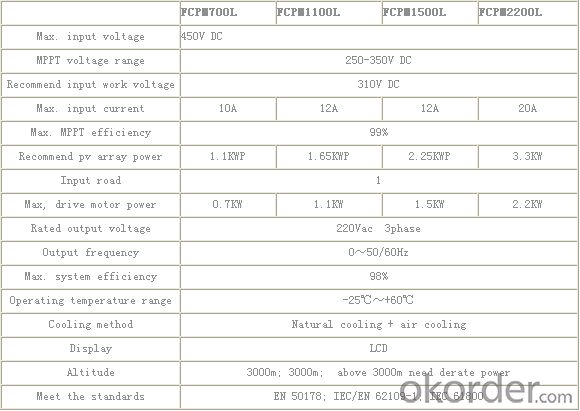
- Q: How does the size of the water storage tank affect the performance of a solar pump system?
- The size of the water storage tank can significantly affect the performance of a solar pump system. The primary purpose of a water storage tank in a solar pump system is to store the water that is being pumped by the solar pump during the day, so it can be used during periods when there is no sunlight or when the pump is not operational. One of the key factors impacted by the size of the water storage tank is the availability of water during non-sunlight hours or when the pump is not operational. A larger water storage tank will have a higher capacity to store water, ensuring a continuous supply even during periods of low or no sunlight. This is particularly important in areas with inconsistent sunlight or where the pump needs to operate during the night. Furthermore, the size of the storage tank also affects the overall efficiency of the system. A larger storage tank allows for more water to be stored, reducing the frequency of pump operation. This can lead to energy savings and prolong the lifespan of the pump as it experiences less wear and tear. Moreover, the size of the water storage tank can also impact the system's ability to meet peak water demands. If the storage tank is too small, it may not be able to store enough water to meet high demand periods, resulting in a temporary water shortage. On the other hand, a larger storage tank can accommodate higher water demands, ensuring an uninterrupted water supply during peak usage. It is important to choose the appropriate size of the water storage tank based on factors such as the water requirements, availability of sunlight, and the frequency of pump operation. A careful assessment of these factors will help determine the optimal size of the storage tank to maximize the performance and efficiency of the solar pump system.
- Q: Do solar pumps require any additional equipment?
- Yes, solar pumps generally require additional equipment such as solar panels, a controller, a battery or storage system, and sometimes a converter or inverter to convert the direct current (DC) generated by the solar panels into alternating current (AC) for pumping.
- Q: Can a solar pump operate at night?
- No, a solar pump cannot operate at night as it relies on sunlight to generate the necessary energy for operation.
- Q: How does a solar pump help in reducing water wastage?
- A solar pump helps in reducing water wastage by using renewable energy from the sun to power the pump and pump water. This eliminates the need for electricity or fossil fuels, which reduces the carbon footprint and energy consumption. Additionally, solar pumps typically have sensors and controls that optimize water usage, preventing over-watering or excessive use, thus minimizing water wastage.
- Q: Can a solar pump be used in remote locations without access to electricity?
- Yes, a solar pump can be used in remote locations without access to electricity. Solar pumps are designed to operate using energy from the sun, making them an ideal solution for areas where traditional electricity sources are not available. These pumps use photovoltaic panels to convert sunlight into electrical energy, which in turn powers the pump and allows for water extraction or irrigation in remote locations.
- Q: Can solar pumps be used for water extraction from rivers or lakes?
- Yes, solar pumps can be used for water extraction from rivers or lakes. Solar-powered pumps use energy from the sun to power their operation, eliminating the need for electricity or fuel. These pumps can efficiently extract water from rivers or lakes and are often used for irrigation, livestock watering, or other water supply purposes in remote areas.
- Q: What is the installation process for a solar pump?
- The installation process for a solar pump typically involves the following steps: 1. Site Assessment: Determine the optimal location for the solar panels and pump system by considering factors such as sunlight exposure, water source proximity, and accessibility. 2. Mounting the Solar Panels: Install the solar panels in a location where they can receive maximum sunlight exposure, typically on a roof, ground-mounted rack, or pole mount. 3. Wiring and Connection: Connect the solar panels to the pump controller using appropriate wiring and connectors. Ensure proper polarity and secure connections to avoid any electrical issues. 4. Mounting the Pump: Install the pump in the desired location, ensuring it is securely anchored. Connect the pump to the water source, such as a well or water storage tank. 5. Installing the Pump Controller: Mount the pump controller near the solar panels, ensuring it is protected from harsh weather conditions. Connect the pump, solar panels, and batteries (if applicable) to the controller. 6. Testing and Commissioning: Test the system by turning on the pump and checking for proper functionality. Adjust settings on the pump controller, such as flow rate or pressure, as needed. 7. Maintenance and Monitoring: Regularly inspect and clean the solar panels to maintain their efficiency. Monitor the system's performance, including water flow, power generation, and battery charge (if applicable), to ensure optimal operation. It is important to note that the specific installation process may vary depending on the type and model of the solar pump system and local regulations. It is advisable to consult the manufacturer's installation guidelines or seek professional assistance for a successful installation.
- Q: How does the maintenance cost of a solar pump system compare to a traditional electric pump?
- The maintenance cost of a solar pump system is generally lower compared to a traditional electric pump. This is primarily due to the fact that solar pumps have fewer moving parts and no complex electrical systems, which reduces the risk of mechanical failure and the need for extensive maintenance. Solar pumps are powered by solar panels, which have a long lifespan and require minimal maintenance. The main maintenance tasks for a solar pump system involve checking and cleaning the solar panels regularly to ensure optimal performance. Additionally, the pump itself may require occasional maintenance such as lubrication and inspection of connections. In contrast, traditional electric pumps require more regular maintenance due to the complexity of their electrical systems and moving parts. Electric pumps often have motors, wiring, and other components that can wear out over time and require maintenance or replacement. The electrical connections also need to be regularly inspected and maintained to prevent any potential issues. Furthermore, traditional electric pumps are typically connected to the grid, which means they are subject to fluctuations in electricity prices. This can result in higher operational costs compared to solar pumps, which rely on the sun's energy and do not incur any ongoing electricity expenses. Overall, while both solar pump systems and traditional electric pumps require maintenance, the maintenance cost of a solar pump system tends to be lower due to the simpler design, fewer moving parts, and reduced reliance on external sources of power.
- Q: What is the lifespan of the solar panels used in a solar pump system?
- The lifespan of solar panels used in a solar pump system can vary depending on various factors such as the quality of the panels, their maintenance, and the environmental conditions they are subjected to. Generally, high-quality solar panels can have a lifespan of around 25 to 30 years. However, regular maintenance and proper care can help extend their lifespan even further.
- Q: Can a solar pump be used for water supply in flower farms?
- Yes, a solar pump can definitely be used for water supply in flower farms. Solar pumps are an efficient and sustainable option for providing water in remote areas or locations without access to electricity. They utilize solar energy to power the pump, making it cost-effective and environmentally friendly.
Send your message to us
Seaflo Solar Pump FCPM2200L Inverter
- Loading Port:
- China Main Port
- Payment Terms:
- TT OR LC
- Min Order Qty:
- -
- Supply Capability:
- -
OKorder Service Pledge
Quality Product, Order Online Tracking, Timely Delivery
OKorder Financial Service
Credit Rating, Credit Services, Credit Purchasing
Similar products
Hot products
Hot Searches
Related keywords
